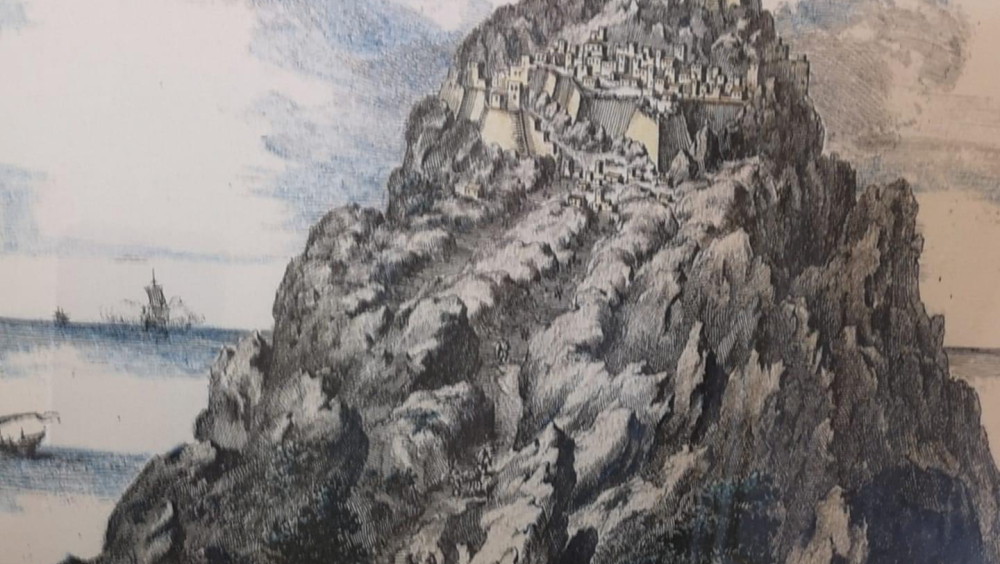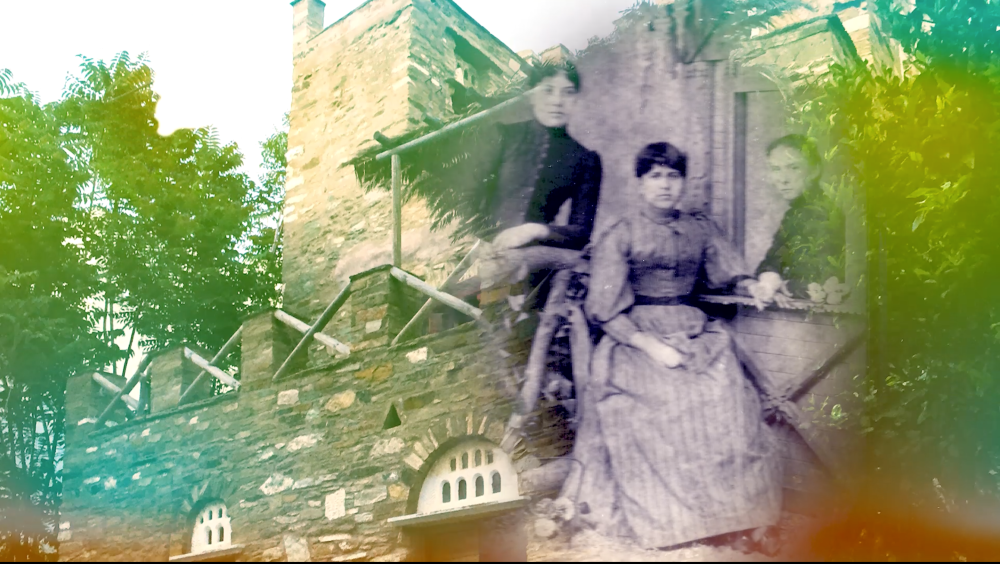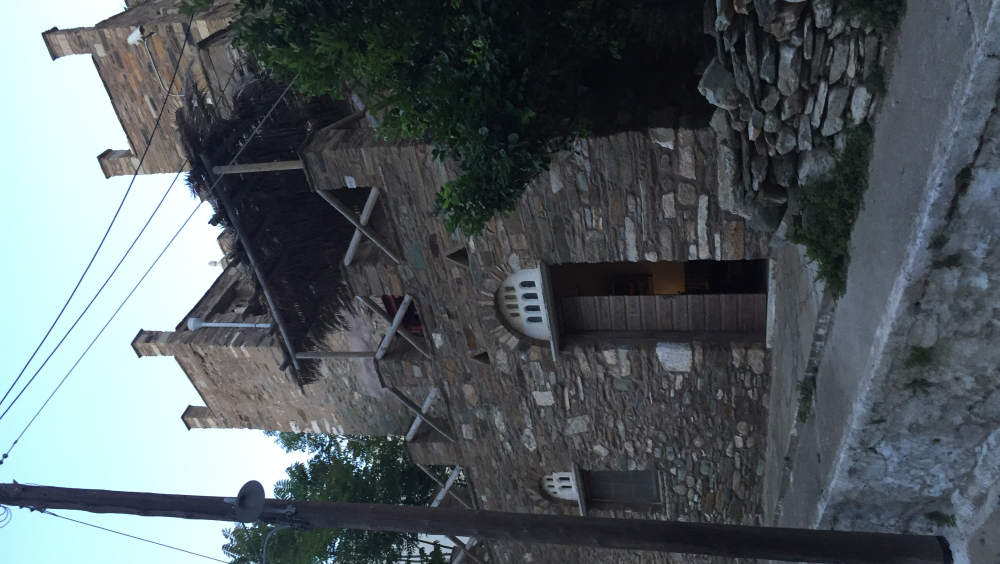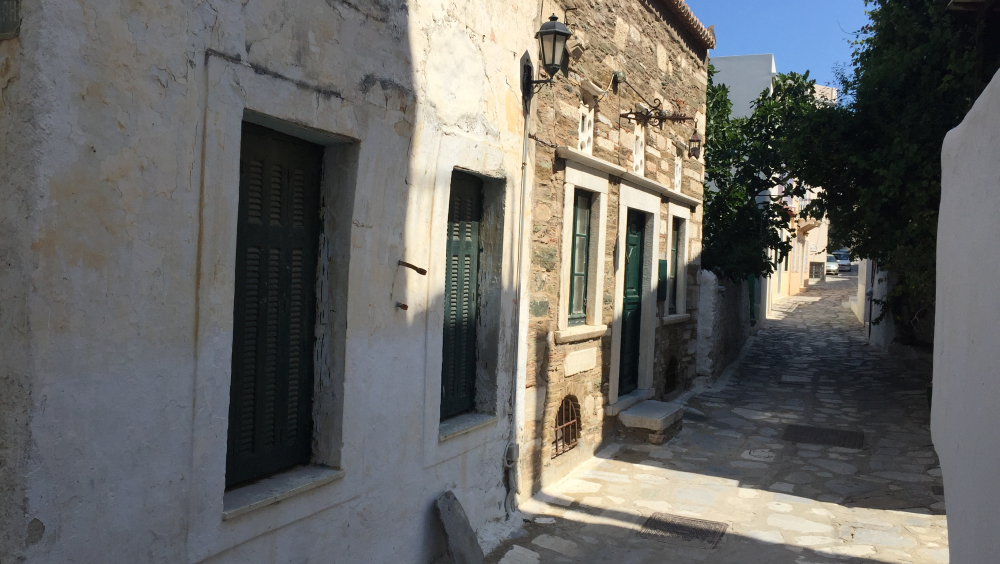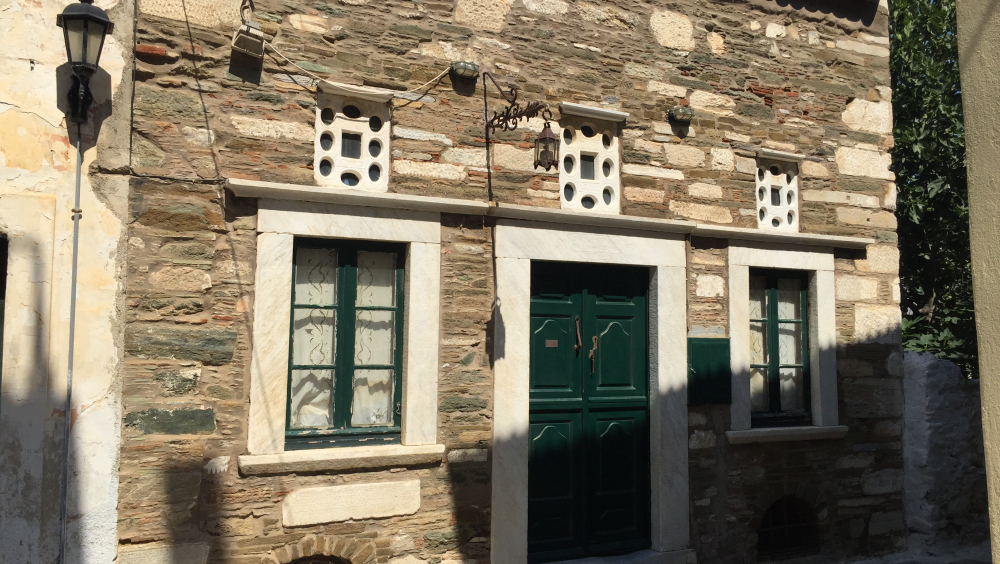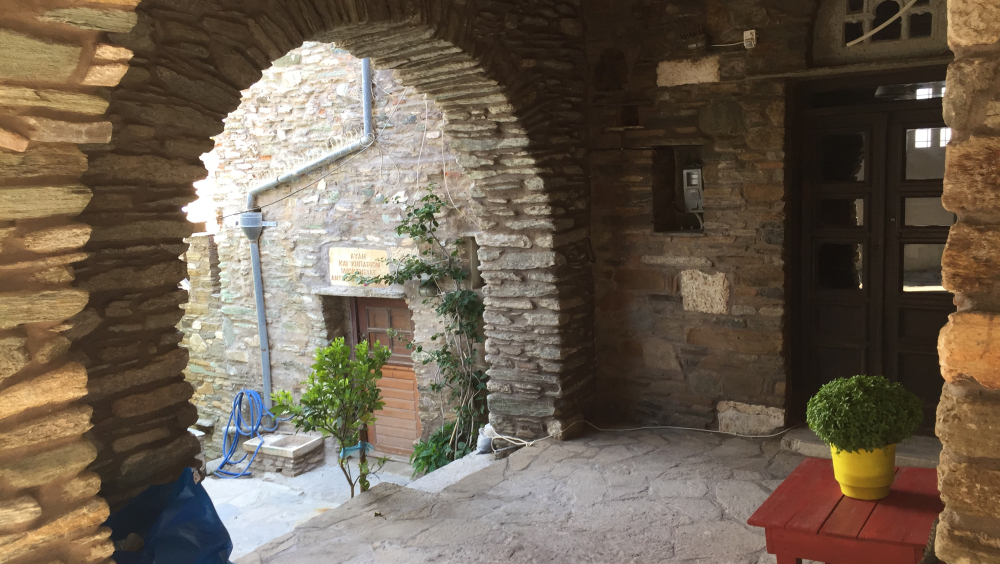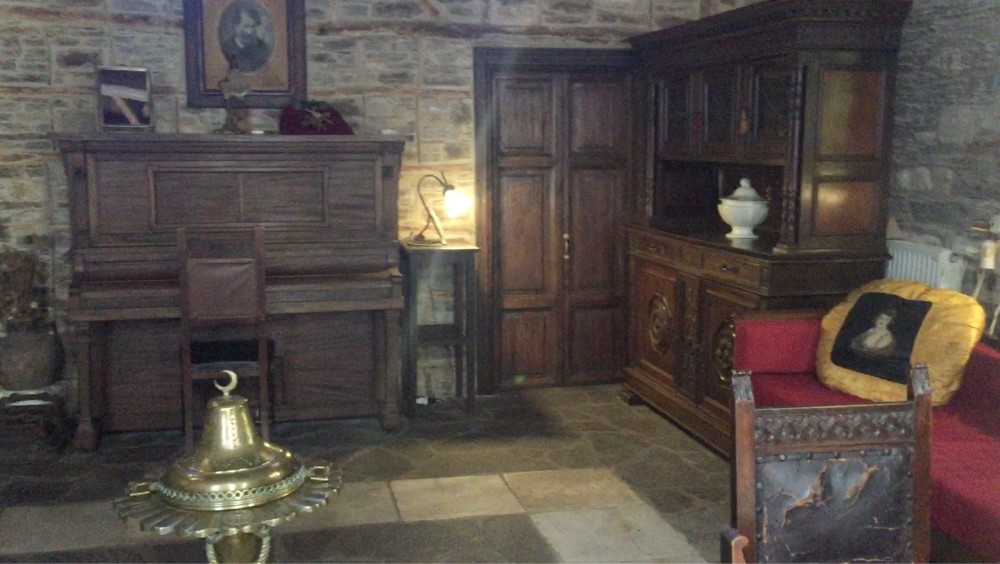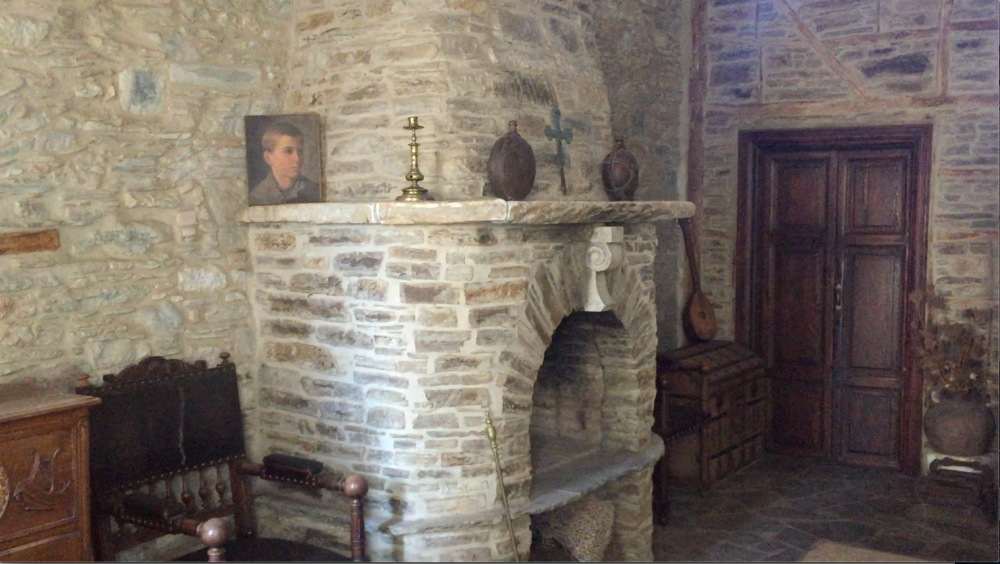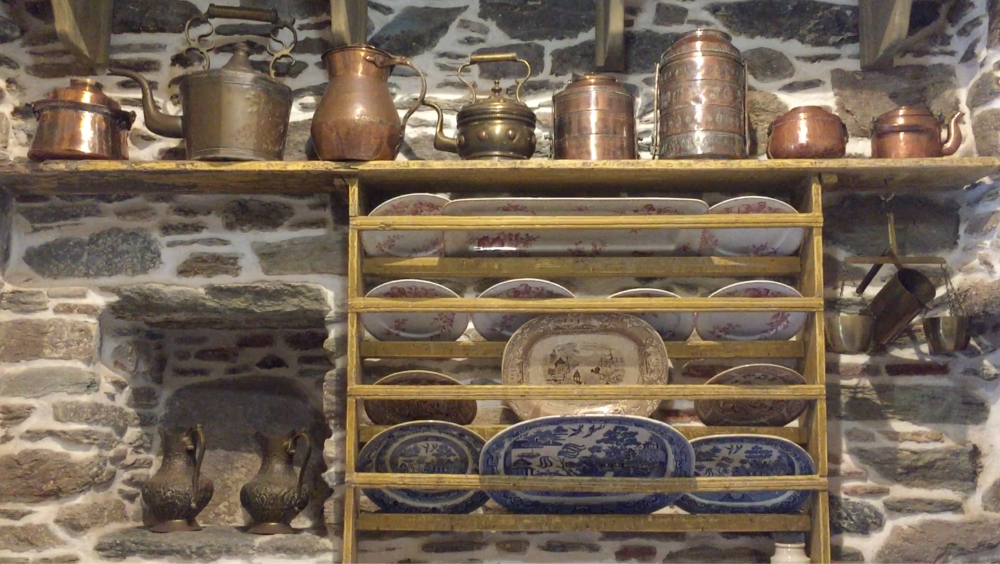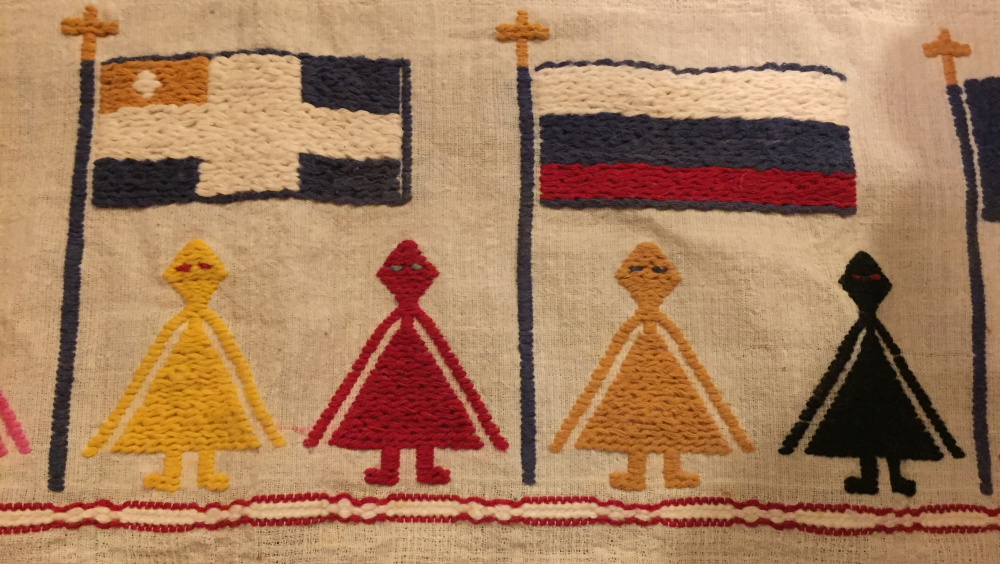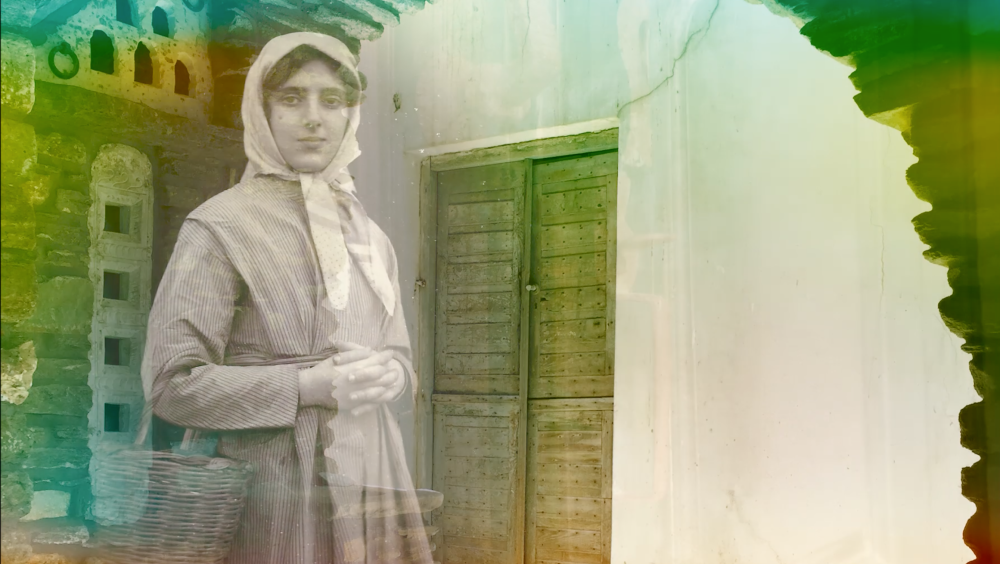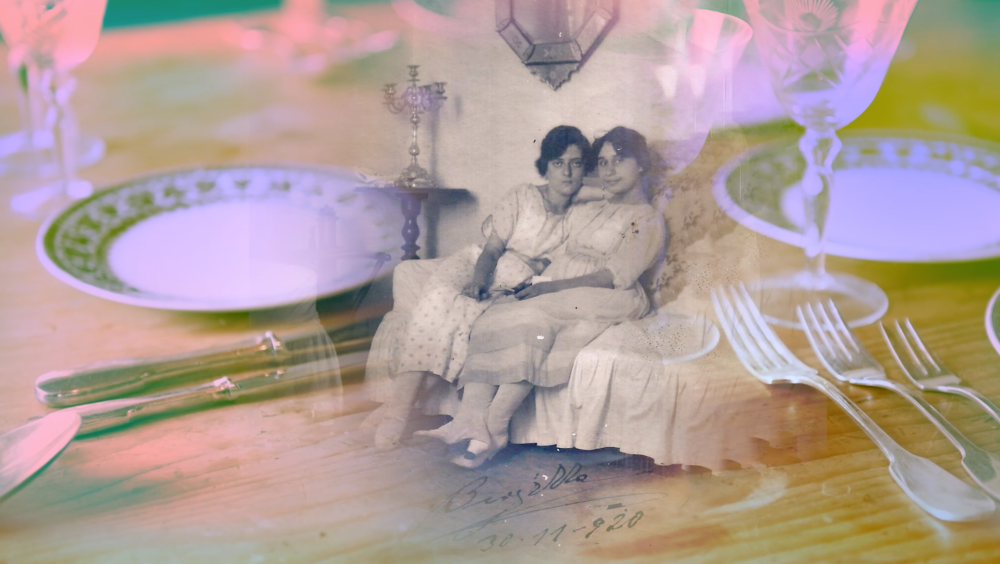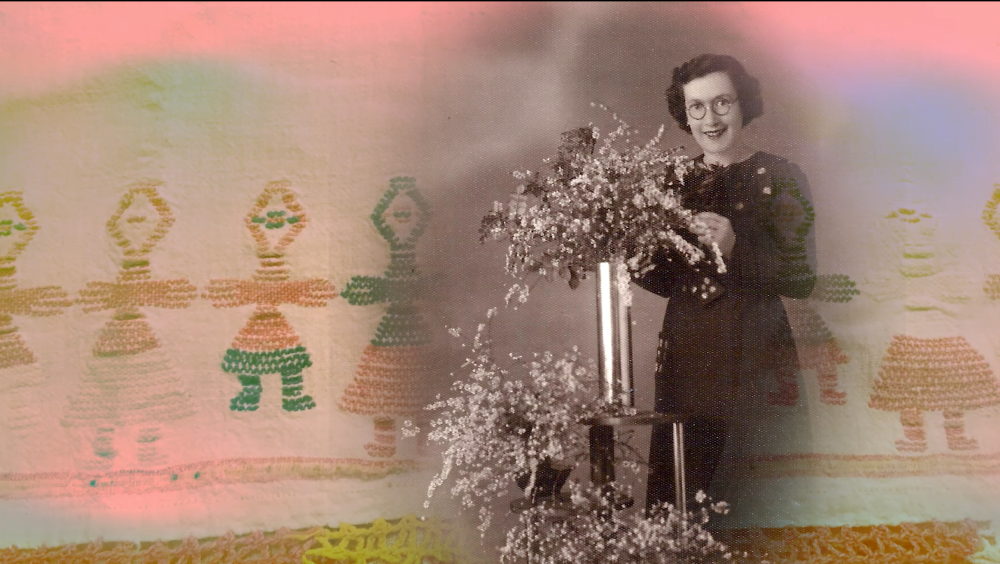THE LADIES OF THE CASTLE
Whenever I was wandering as a child in the narrow alleys of my island, usually during summer afternoons when everyone dizzy from the heat and the sun enjoyed their daily siesta and so I could slip unnoticed out of the house, my explorations constantly led me to “Apano Vryssi”, the Upper Fountain neighborhood. It's as if this neighborhood, no matter how small, it was hiding something like an undefined big secret.
But was it the neighborhood itself or the so-called “Kastro”- the Castle- that gave me this pleasantly stimulating feeling? The majestic, enclosed and abandoned stone house called "Kastro", the only one in the neighborhood that had completely hooked its more than two-century old architecture on the alley tiles, refusing to surrender to the modernization of concrete that most of the adjoining houses underwent.
I would arrive hopping and skipping at Apano Vryssi, always stumbling on that one, darker grey slab on the alley path, that probably intentionally protruded in the exact place so that I would find myself falling right in front of the Castle door. I would sit on the ground, fooling around, so that if anyone passed by, they would think that I had stumbled just then. And for hours my eyes would be fixed on the closed fortress with the carved marble slab over the heavy green wooden door with the inscription "Antonios Parissis Building March 1803."
I was wondering who this Paris... was, an enigma, the name alone so exotic and distant, transporting you to other places and times. I wished so much that I could transform into a little summer lizard and squeeze through the cracks of the huge stones that held it, come out on the other side and taking my human form again, tour its sanctuaries, secrets of this house, discovering all those who inhabited it.
I would never have believed that 40 years later my wish would come true.
And yes!
I became a summer lizard, or rather an autumn lizard that managed to enter the inner-most sanctuaries of her impregnable childhood tower.
The story that I will tell you is a true story of the people who lived inside the Castle, in this special emblematic house of the small Cycladic island of Tinos, since its current owner and friend, Antonis Syrianos, recorded in detail their daily life, their occupations, their social relations with the place but also their contacts with their European friends, blending local traditions, political conjunctures, legends and beliefs, social classes and every aspect of social and political reality in an incredible unique text written in the Tinian dialect.
And as much as this toil sounds praiseworthy and extremely challenging to carry out, his next achievement was even greater. Antonis managed to renovate the Castle with detailed architectural precision, equip it with all the era-appropriate furnishings, collecting rare objects, useful and decorative ones, that adorn each room individually, and manage to revive every corner of it, so convincingly, that as soon as you step in, and enter it, the journey through time begins immediately, effortlessly and extremely pleasantly.
And you can't wait to meet more and more the heroines, another surprise, since in Kastro, women were the stars all these years; unique personalities who have left their mark on every object, whether it is their own handicrafts, or their remarkable silverware and porcelain, a dowry of an era that returns imperatively through the diligent exhibition of objects and the hospitable mood on offer from the new host of the Castle.
So dear visitors welcome to the history of the Kastro- the Castle, where the Kastromenes-the Ladies of the Castle live!
While following the lives of these women, we witness the shaping of the social landscape that is transformed during these periods of crucial importance when the political and economic situation in Europe changes, entraining the whole culture of the small island.
The island from its Venetian occupation passes to the Turkish occupation and later to the Russian occupation and until 1821, Tinos is the economic capital of the Cyclades with about 30,000 inhabitants, with consulates and sub-consulates of France, Russia, England, Denmark, Spain.
This interaction of so many cultural encounters created an inconceivable correlation of cultural elements, a unique heritage that is reflected in aesthetic choices and performances both tangible and intangible. Intangible references concern social morals that are projected on the material background of the landscape. The individual, however, as part of a society lives socially. Therefore, from the definition of the term 'ethos', as a reference to the established rules of social living, we understand how important such an investigation of the perception of social morals is, meaning the ways of life, which in the context of historical evolution, shape and are shaped by the composition of the local ensemble. These morals transcend the individuality and determine behaviors with common elements of socio-cultural scale structured by their European heritage.
A condition which is the basis for our reasoning process, recognizing in the landscape those characteristics that make it cultural. The landscape is the material, natural or anthropogenic background of the place along with the cultural actions that are expressed in it. Therefore, the landscape is not only the material reality, but it is also the social conditions associated with it. The history of Kastro, this unique building that remains alive on the island, is a fundamental source of knowledge for exploring the characteristics of European cultural heritage that is reflected both in the symbolism introduced in the design principles and the way of constructing the architectural space, as well as in representations, ideologies and beliefs, which characterize a society and are inextricably linked to the economic and political reality.
After abandoning the old wet sunless cramped city inside the Exobourgo Castle, the new capital of the island was built rapidly and close to the sea, with two distinct neighborhoods; the “Epano Vryssi” – the Upper Fountain of the aristocracy and the “Kato Vryssi” – the Lower Fountain of the peasants, of the frightened immigrants fleeing the Turks, and of the plebeians who for two hundred whole years will fight without weapons, swearing and blaming each other. These are the two neighborhoods of “Tinos Chora”- Tinos Town.
The Upper Fountain, using arrogance and wealth as its only connecting elements, managed to gather and unite all the nationalities and dogmas of the period, against the new enemy that was no longer the non-religious but the poor, the jobber and the boorish. The Lower Fountain, which in the name of misery united and fraternized even the most incompatible in one army that would not allow wealth to rejoice in its wealth.
An old European north and an old European south, living less than two hundred meters away, but far enough to accentuate the huge difference in the neighborhoods’ wallets and mentality.
Antonis Syrianos’ book “The Kastromenes- The Ladies of the Castle” deals with the everyday life of a socially divided island from early twentieth century till almost century’s end. While sharing with us the island’s uniquely twisted, endless stories of a daily conflicting society, Syrianos assigns the absolutely leading role to the women of the island, with men being passive and often embarrassed to follow them.
The central location where the Kastromenes-The Ladies of the Castle lived and acted was a tower home, the Kastro -The Castle, of unique architectural design as compared to the island’s usual practices. It consisted of numerous smaller buildings that would be combined to facilitate different needs and activities. The tower homeis preserved today to such an extent that when a visitor enters not only do they feel the presence of these women, but as they gaze upon all their personal belongings presented in an active state, they expect at some point, from a certain angle, those women will re-appear and continue to move the threads of the island, like those years back, when they considered themselves as the only ones accomplishing great work.
This is what we aim to achieve during the European Heritage Days, next September, by opening to the public the spaces of the “Kastro”, as the locals call it, attracting the interest of all people, Tinians and visitors. We consider it an obligation to share this incredible heritage after overcoming the many challenges that such a great effort entail.
A lot of island cultures in the Mediterranean Sea have been traditionally affiliated socio-politically with mainland European cultures.
Tinos is a typical example of those islands.
After the fragmentation of the Byzantine Empire by the crusaders of the 4th crusade, most of the Cyclades islands were conquered in 1207 by Marco Sanudo, the Venetian nobleman, who formed the Duchy of the Archipelagos, with Naxos being its center.
Tinos, however, was not part of this state, but the very same year, came under the rule of two Venetian brothers, Andreas and Jeremiah Gizi. This small state entity, remained in the hands of the latter’s heirs and successors till 1390, when Venice took over the direct administration of the island.
It was during this period that the island acquired its Catholic population, that still represents one third of its inhabitants. When Constantinople fell to the Turks in 1453, the position of the islanders became very difficult. One by one, the islands were ceded to the Ottomans with Tinos, the last Christian enclave, to capitulate, surrendering to Ottoman fleet in 1714,
After the Greek War of Independence from the Ottoman Empire (1821-1829), the Cyclades became part of the newly formed Greek state. The population of the island at this time increased by refugees fleeing from areas still under Ottoman rule, following the first wave of 1457, when thousands of persecuted Cretans found shelter on the island.
The islanders’ idiosyncrasy, as well as their receptivity for innovation, combined with over three centuries of Venetian rule, created a multiculturalist tradition, that soon became a commercial hub, offering prosperity and wealth to its inhabitants.
This sense of freedom was reflecting in all aspects of social life, architecture, music, culinary culture, even in ornaments and accessories that sailors brought to their families from all parts of the world.
This familiarity with various different cultures and the lack of fear in dealing with everything that was unknown to them, is what characterizes the Tinian society and the inhabitants of the Upper Fountain and the Lower Fountain in particular.
More than 100 years ago, the rich Epano Vryssi-Upper Fountain, was a social model of coexistence ,based mainly on economic abundance, completely ignoring the often dividing elements of religion and nationality.
This prosperity created a climate in which the European cultural heritage was stimulated through exchange of cultural events, art, culinary traditions, gastronomy, broderie, architecture, music and works of art and sustained as such, creating and encouraging a great tolerance and acceptance to any cultural diversity.
Many European travelers confirmed in their notes the coexistence of so many different nationalities in Tinos.
In his book « Voyage dans l'Eubée, les îles Ioniennes et les Cyclades » in 1841 Jean Alexandre Buchon is impressed by the cosmopolitan spirit of the ihabitants
« …M. Theotoki qui était venu à Syra, nous avait invités par l'intermédiaire de Sartiges à aller le voir à Tinos où il est établi depuis quatre mois avec sa femme, Mlle Digby, lady Ellenborough. Nous partîmes de Syra à onze heures, car quand on est ainsi plusieurs, chacun retarde l'autre. Le calme nous retint en mer plus longtemps que nous ne le pensions et nous ne pûmes arriver au port Saint-Nicolas de Tinos qu'à cinq heures du soir. Nous descendîmes chez M. Theotoki père, gouverneur de l'île. »
Further more
«… J'allai de là au jardin du docteur Zallony qui a publié en 1807, à Paris, un voyage dans l’ île de Tinos et depuis un autre ouvrage, aussi en français, sur les Fanariotes et un troisième sur la Moldavie. Il n'y a pas de libraire à Tinos et je n'ai pu m'y procurer aucun de ces ouvrages. M. Zallony a vécu longtemps en France et possède même une jolie propriété dans les environs de Marseille. Il s'est retiré à Tinos où il exerce encore la méde- cine, en se faisant largement payer. »
The action of the project
The Ladies of the Castle
concerns the opening and operation of the "Kastro" premises as a folklore museum, where guided visits will offer the opportunity of discovering various exhibits from the daily life of the inhabitants of the past.
Experts will guide visitors through the 600 sq. meters of the Castle, consisting of living rooms, bedrooms, and kitchens, all dressed up with the original furniture, tools and objects used at that time, providing them with additional information about the historical and sociological framework.
On the second floor, there will be a space where audiovisual multimedia will be used, through which visitors will get in touch with the sound of local dialect of Tinos, recordings of oral stories, accompanied by music, and a rich visual archive of photos and videos with the aim of promoting awareness of the whole history of the place and the neighborhood.
Also, during the open days an educational program for kids and young students will give them the opportunity to get in touch with the local cultural heritage.
Kastro, the Castle is an unexplored monument that gathers inside its thick walls all the multi-cultural European past of the tiny island of Tinos. Its opening becomes a priority for the community that owe to preserve its identity and share its heritage treasures!
Marineta Mak Kritikou- Film & Multimedia Director
kmarineta@gmail.com
47,Kokkinara str,
14563 Kifissia, Greece
T. 0030 210 8010432
M. 0030 694 2600691
